November 21, 2025
How Direct Cremation Works in Oklahoma (Step-by-Step)

How Direct Cremation Works in Oklahoma (Step-by-Step)
When a death occurs, many Oklahoma families want something simple, dignified, and affordable. That’s where direct cremation in Oklahoma comes in. It’s the most streamlined form of cremation: no public service beforehand, no embalming, and fewer moving parts during a very emotional time.
This guide walks you through the step-by-step direct cremation process, what’s usually included, and how to decide if it’s right for your family.
What Is Direct Cremation?
Direct cremation is a simple cremation that happens soon after death:
- The deceased is transferred from the place of death directly to the funeral home or cremation provider
- Required paperwork is completed
- After a legally required waiting period and review, the cremation takes place
- The cremated remains (ashes) are returned to the family
There is no viewing, visitation, or funeral service with the body present before the cremation. Families can always hold a memorial, celebration of life, or church service later with the urn.
Direct cremation is often the most affordable cremation option in Oklahoma, with many providers offering packages specifically for this type of service.
Legal Basics for Direct Cremation in Oklahoma
Before any cremation can take place in Oklahoma, a few legal steps are required:
- Cremation authorization. The legal next of kin (or someone the deceased appointed in writing) must sign a cremation authorization form.
- Medical Examiner permit. The State Medical Examiner must issue a permit before a body can be cremated.
- Waiting period. There is typically a 48-hour waiting period between the time of death and the cremation.
- Licensed providers. Cremation must be handled by licensed funeral service professionals and a licensed crematory.
Your funeral home will manage these technical and legal pieces, but it helps to know what’s happening behind the scenes.
Step-by-Step: How Direct Cremation Works in Oklahoma
1. First call after a death
When a death occurs:
- If it’s expected (for example, at home under hospice care), call the hospice nurse or attending physician. They will pronounce death and guide the next steps.
- If it’s unexpected, call 911. Emergency personnel and law enforcement will involve the Medical Examiner if required.
Once death is pronounced, the family chooses and calls a funeral home or cremation provider.
If your family already plans to use Simplicity, you can call us directly or visit our Immediate Need page for 24/7 help.
2. Transfer into our care
The funeral home sends a professional removal team to:
- Gently transfer your loved one from the home, hospital, nursing facility, or hospice house
- Bring them to a secure, climate-controlled area
- Begin the required identification and documentation process
You do not need to arrange separate transportation. It is typically included in most direct cremation packages.
3. Arrangements conference (in person or by phone)
Next, you’ll meet with the funeral director—either in person or by phone/video—to:
- Provide basic vital statistics
- Choose direct cremation as the form of disposition
- Sign:
- Cremation authorization
- Vital statistics needed for the death certificate
- Any additional required forms
- Discuss options for:
- Urns
- Memorial or celebration of life
- Veterans honors (if applicable)
This is also when we talk about affordable cremation choices, payment options, and any pre-planning that might already be in place.
If you’d like to see specific offerings, you can review our Cremation Options.
4. Filing the death certificate and permits
Behind the scenes, the funeral home:
- Works with the physician or Medical Examiner to complete and sign the medical portion of the death certificate
- Files the death certificate with the state
- Requests the cremation permit from the Medical Examiner
- Orders certified copies of the death certificate on the family’s behalf
You don’t have to navigate state offices on your own—your funeral home handles this as part of the simple cremation process.
5. The 48-hour waiting period
Oklahoma generally requires a minimum of 48 hours between death and cremation. During this time, your loved one is:
- Kept in secure shelter or refrigeration
- Properly identified and tracked
- Prepared for cremation according to state rules and the crematory’s procedures
If there are any delays (doctor unavailable, permit review, etc.), your funeral director will explain what’s happening and why.
6. The cremation itself
Once all authorizations and permits are in place and the waiting period has passed, the cremation takes place:
- The deceased is placed in a suitable cremation container.
- The container is placed into a cremation chamber in a licensed crematory.
- After cremation, remaining bone fragments are processed into a fine, ash-like consistency.
Some families choose to witness certain parts of the process, depending on the provider’s policies.
7. Returning the cremated remains
After the cremation:
- The cremated remains are placed in an urn or temporary container
- The funeral home arranges a time for the family to pick up the urn
- If you wish, the urn can be:
- Buried in a cemetery plot
- Placed in a columbarium niche
- Kept at home
- Scattered in a lawful location
Your funeral director can explain local cemetery options and any rules for scattering.
8. Planning a memorial or celebration of life
One benefit of direct cremation is flexibility. You can schedule a memorial service:
- At your church
- At the funeral home chapel
- Outdoors or at a special location
- Immediately, or weeks or months later
Many families appreciate the time to gather relatives, create a meaningful video tribute, or plan a personalized gathering.
You can read more ideas on our Cremation Options and Burial Options pages.
What’s Usually Included in a Direct Cremation Package?
While each funeral home is different, most direct cremation packages include:
- Basic services of the funeral director and staff
- Transfer of the deceased into the funeral home’s care
- Sheltering and required refrigeration
- Completion and filing of necessary paperwork and permits
- A basic cremation container
- The crematory fee
- A temporary urn or container for the cremated remains
Common extras (not always included):
- Upgraded urns
- Additional certified copies of the death certificate
- Witness cremation or additional facility use
- Keepsake jewelry or memorial products
Always review the provider’s General Price List and ask exactly what is or isn’t included in a package.
Is Direct Cremation Right for Your Family?
Direct cremation may be a good fit if you:
- Prefer simplicity over formality
- Want to keep costs down while still choosing dignified care
- Need flexibility to schedule a memorial later
- Have family members traveling from out of state
- Hold personal, spiritual, or environmental beliefs that align with a simpler process
It may not fit as well if your family strongly prefers a traditional funeral with the body present, extended visitation, or specific rites that require a casketed service.
Next Steps
If you’re facing a loss right now and think simple cremation in Oklahoma is right for your family, we’re here to help.
- For urgent situations, visit our Immediate Need page or call us any time.
- To see specific service options, visit our Cremation Options.
- If you’re planning ahead for the future, our Planning Ahead page explains how to document and fund your wishes in advance.





